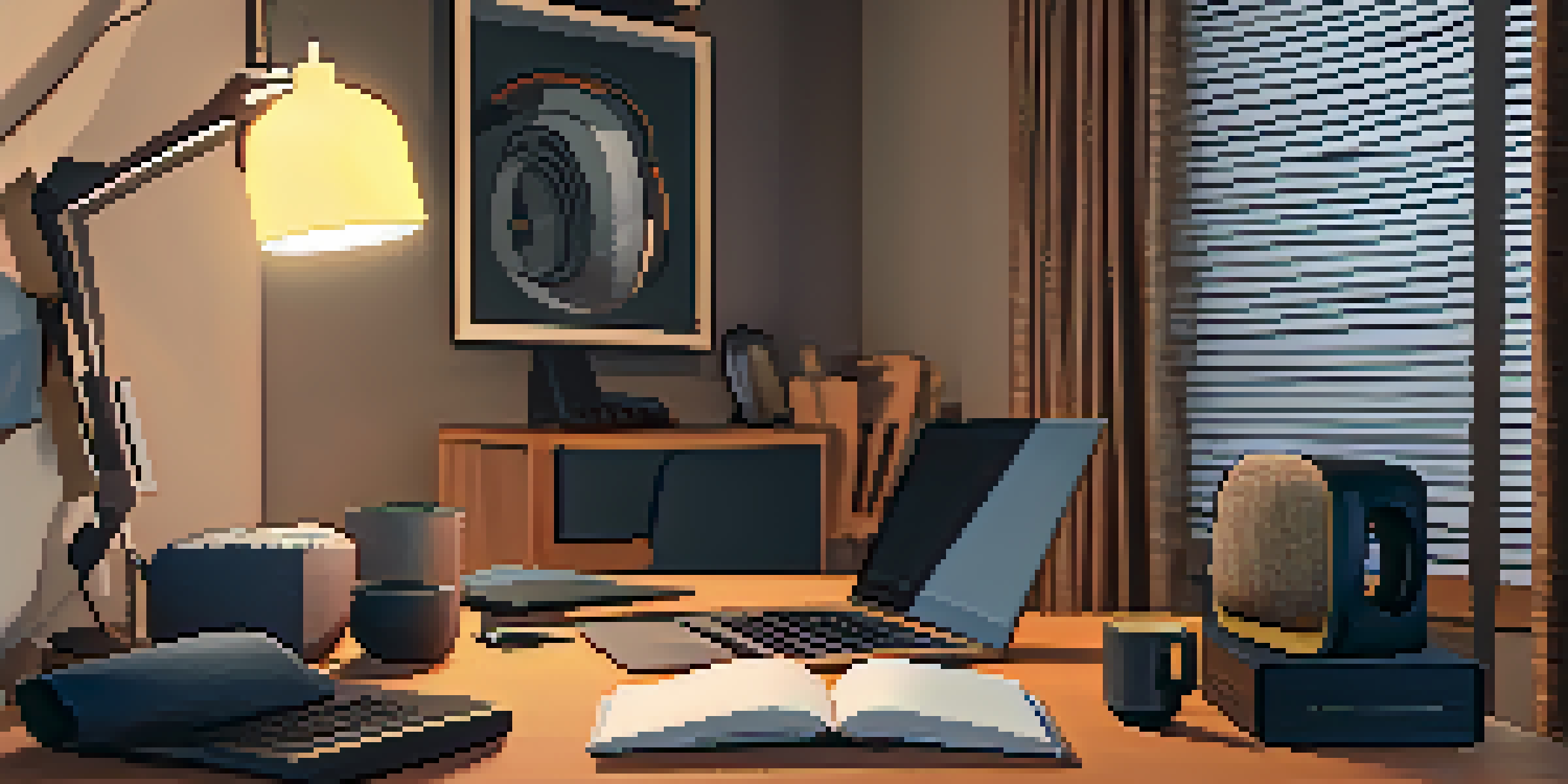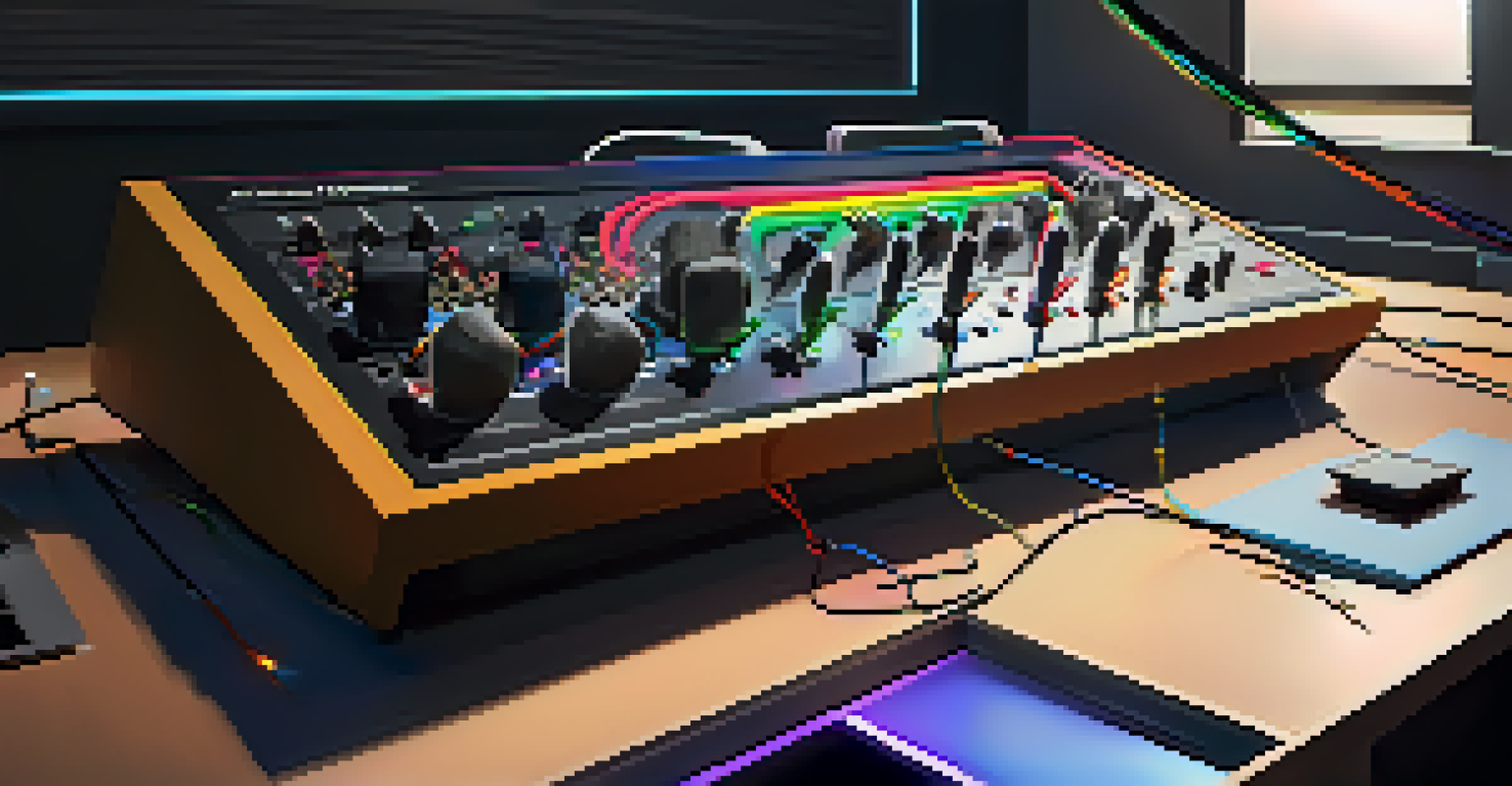Building Your Podcasting Equipment Setup on a Budget

Understanding Your Podcasting Needs Before Buying
Before you dive into purchasing equipment, it’s essential to clarify your podcasting goals. Are you planning to record solo episodes, conduct interviews, or maybe even host a panel discussion? Understanding the format of your show will help you make informed choices about the equipment you need.
Good audio quality is the foundation of a successful podcast.
Once you have your podcast format in mind, consider your recording environment. Will you be recording in a quiet home office, or do you need to account for background noise? This will influence your choice of microphones and soundproofing options.
Lastly, think about your budget. Setting a clear budget helps you prioritize your spending on essential gear, ensuring you invest in quality equipment that meets your specific needs without overspending.
Choosing the Right Microphone for Your Podcast
Selecting the right microphone is crucial for achieving excellent audio quality, which is vital for engaging your audience. Dynamic microphones are often recommended for beginners because they pick up less background noise, making them great for home recordings.

If your budget allows, consider a condenser microphone for richer sound quality. They are sensitive and can capture a wider range of frequencies, making your voice sound more professional. However, they can also pick up unwanted sounds, so be mindful of your recording environment.
Define Your Podcasting Goals
Clarifying your podcast format and environment helps you choose the right equipment.
Affordable options are available; for instance, USB microphones can be a fantastic starting point for podcasters on a budget. They offer easy connectivity and decent sound quality, perfect for those just starting their podcasting journey.
Investing in Headphones for Better Mixing
Quality headphones are an often-overlooked part of a podcasting setup but are essential for mixing and editing. They allow you to hear your audio clearly, helping you catch mistakes or background noise that may need to be addressed.
The best way to get started is to quit talking and begin doing.
When looking for headphones, consider closed-back models that isolate sound. This helps you focus on your recording without being distracted by external noises. You don’t need to splurge; there are many budget-friendly options available that offer excellent sound quality.
Additionally, look for comfortable designs, especially if you plan to wear them for extended editing sessions. A good pair of headphones can significantly enhance your podcasting experience, making the editing process smoother and more enjoyable.
Finding a Budget-Friendly Audio Interface
An audio interface is a crucial tool for connecting your microphone to your computer, especially if you’re using an XLR mic. While there are expensive interfaces on the market, many affordable options still provide excellent sound quality.
When choosing an audio interface, look for models with at least two inputs, allowing for flexibility in recording guests or multiple microphones. Some budget-friendly options come equipped with built-in preamps that can enhance your sound quality without breaking the bank.
Choose Quality Microphones
Selecting the right microphone ensures excellent audio quality, crucial for engaging your audience.
Additionally, consider interfaces that offer easy plug-and-play functionality. This will save you time and hassle during setup, allowing you to focus more on creating great content rather than troubleshooting technical issues.
Exploring Free and Low-Cost Editing Software
Editing your podcast is where the magic happens, and you don’t need to spend a fortune on software to achieve professional results. Many free and low-cost audio editing programs, such as Audacity or GarageBand, offer robust features suitable for beginners.
These programs come with user-friendly interfaces and plenty of online tutorials to help you get started. You can easily learn how to cut, trim, and enhance your audio without the steep learning curve associated with more expensive software.
As you gain confidence and experience, you might consider upgrading to paid software with advanced features. But starting with free options allows you to hone your skills without financial pressure.
Creating a Soundproof Recording Space on a Budget
A soundproof recording space can significantly improve audio quality, but you don’t need to invest in expensive soundproofing materials. Start by selecting a quiet area in your home, away from noisy appliances or street traffic.
To enhance sound quality, consider using soft furnishings like curtains, cushions, or blankets to absorb sound. You can also create DIY sound panels using foam or even cardboard covered in fabric to reduce echo in your recording environment.
Utilize Budget-Friendly Tools
Many affordable resources, like editing software and soundproofing solutions, can enhance your podcasting experience without overspending.
These budget-friendly solutions can make a noticeable difference in your recording quality. A little creativity can go a long way in transforming a simple room into a professional-sounding podcast studio.
Utilizing Online Resources for Podcasting Tips
As you embark on your podcasting journey, take advantage of the wealth of online resources available. Websites, forums, and YouTube channels dedicated to podcasting can provide invaluable tips and tricks that can enhance your production skills.
Podcasts about podcasting can also be a great source of inspiration and education. Listening to industry experts discuss their experiences can give you insights into best practices and common pitfalls to avoid.

Joining online communities or social media groups can connect you with other podcasters who can share their own budget-friendly tips and recommendations. The collaborative spirit in these spaces can be incredibly supportive as you navigate your podcasting journey.